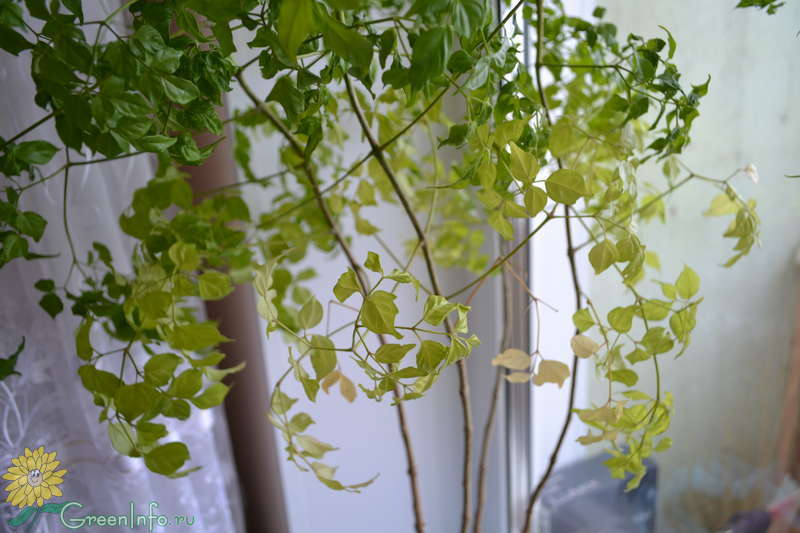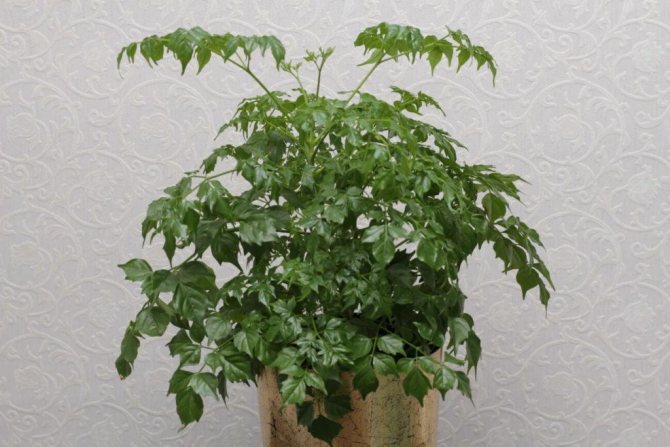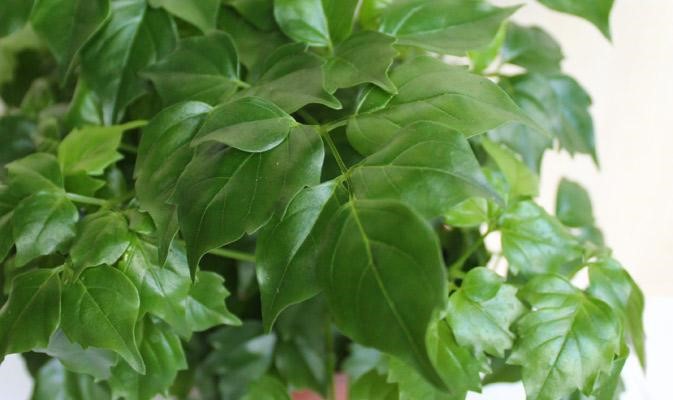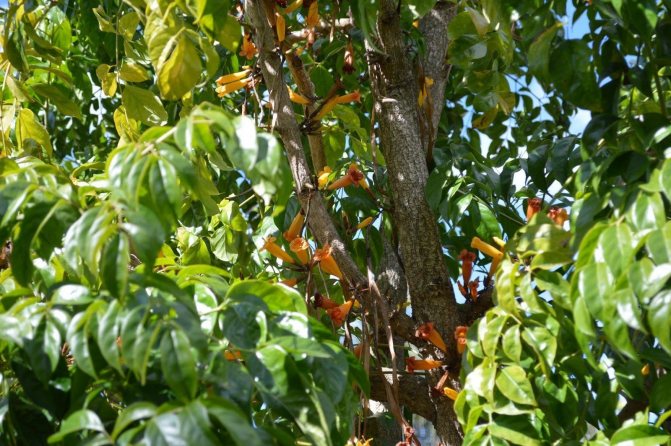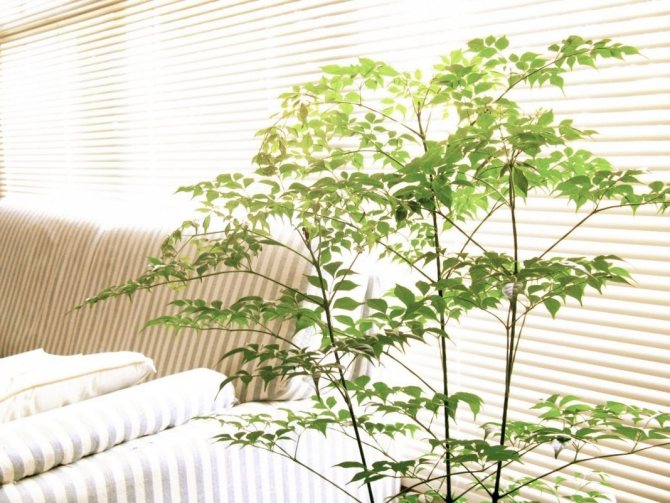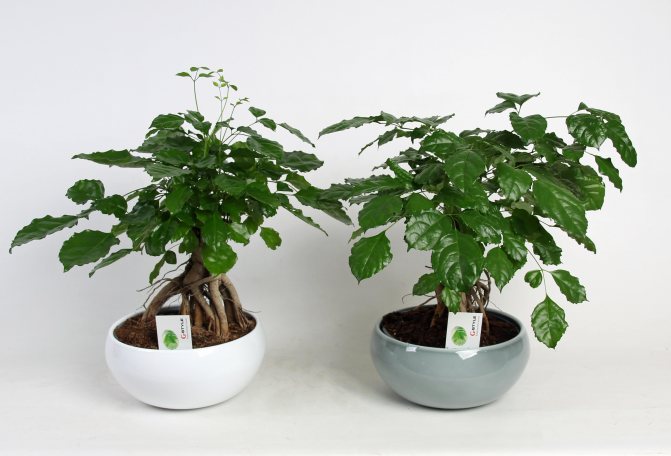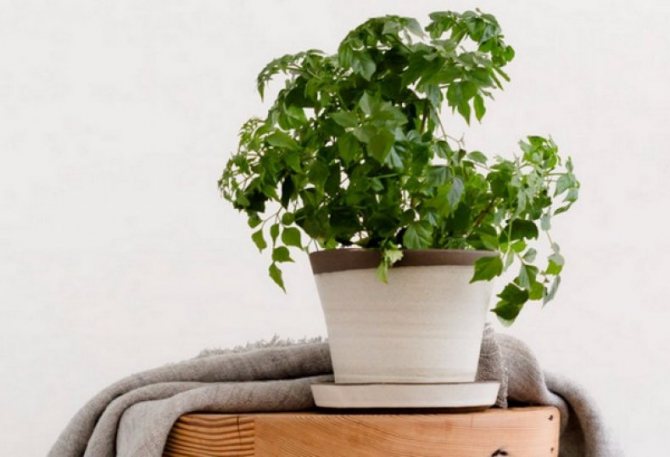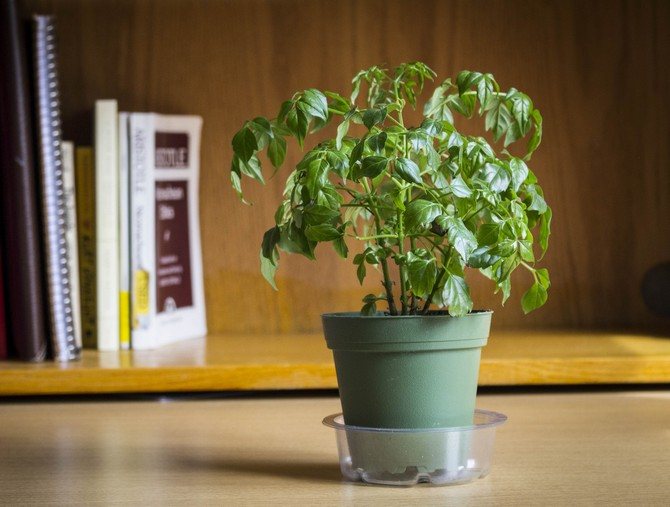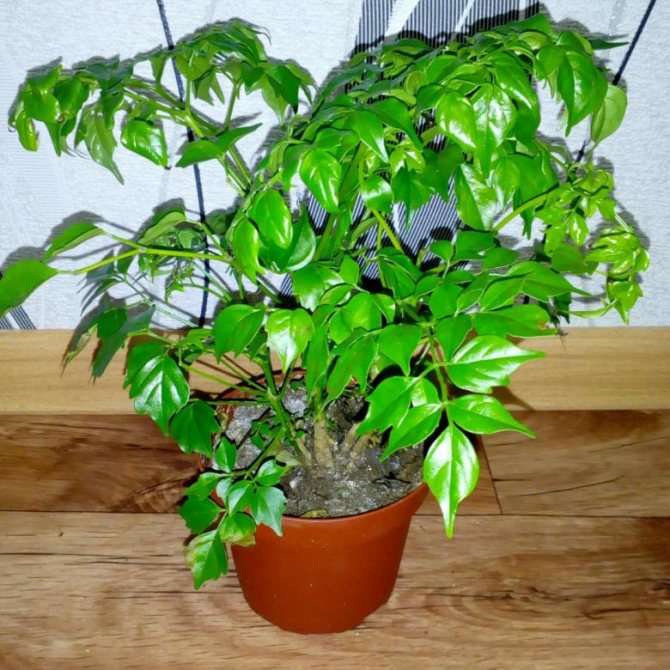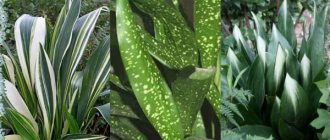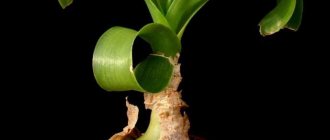The common radermacher plant is a tree popular with flower growers. It is famous for its leaves, which shine thanks to their gloss. The culture is not capricious in terms of care and growing conditions. It can be kept even indoors.
For the first time, a room radomer appeared in Asia. The family to which the tree belongs is called bignonium. In nature, culture can grow up to thirty meters in height. She has the appearance of a flowering tree.
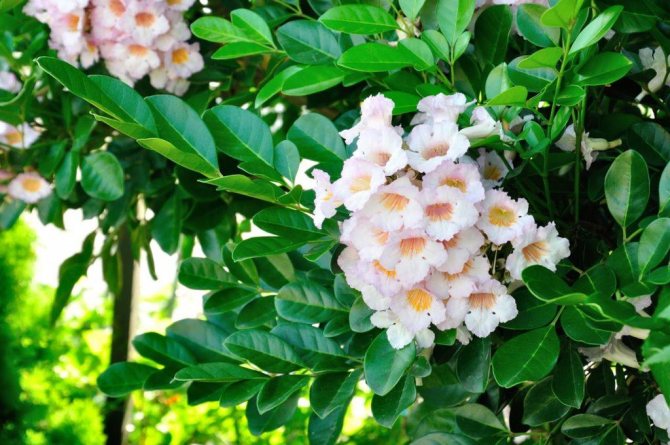
Views and photos
Below are descriptions and photos of the main varieties of radermacher; only one is suitable for reproduction and care at home.
Chinese, titmouse
There are about 16 species in the genus, however, one single variety is well grown at home - Radermachera Chinese, titmouse (Radermachera sinica). This variety is the most capricious and patient of all.but requires a lot of space. It has a straight and even trunk, bright large leaves (sometimes variegated specimens are also found), a specific delicate aroma. The yellow flowers look like bells and open only at night. It grows quickly and gives a significant increase over the summer.
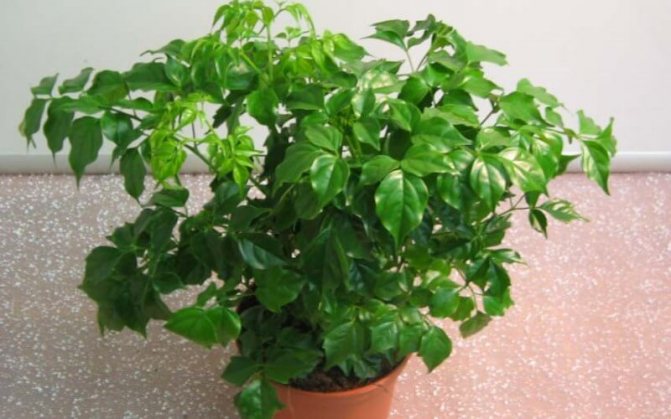

Photo of flowering radermacher
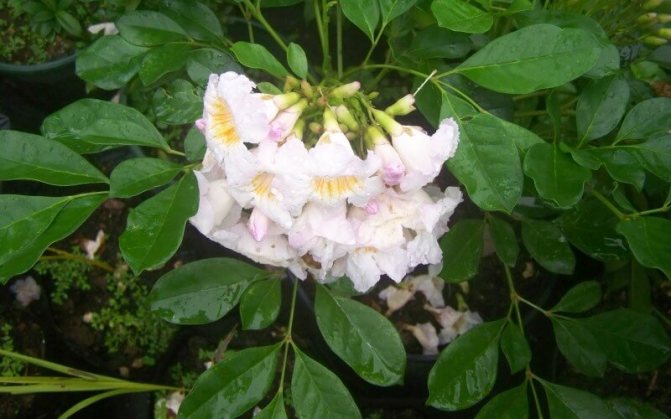

Fiery red
It has a strong jasmine scent that envelops the tree during flowering. The buds are orange-red, tubular. Leaves are oval, wide.
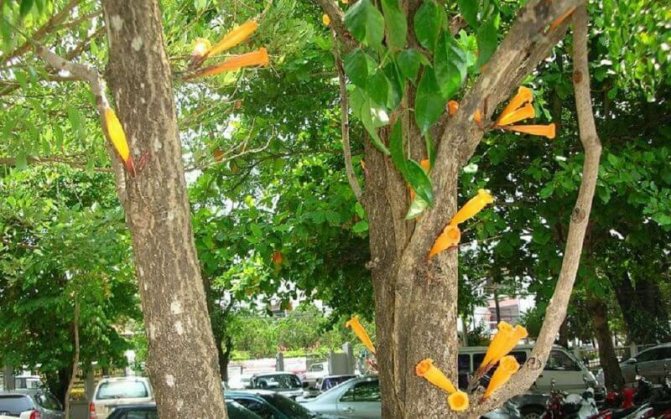

Arboreal
Loves the dry climate of Indian forests. It is easy to distinguish it from the rest precisely during the flowering period, when numerous snow-white buds with yellowish edges open right on the dense bark and thick branches.


Botanical characteristics
The genus Radermachera (Radermachera) has about sixteen species and they are included in the Bignoniaceae family. Radarmacher is grateful for its name to the botanist - amateur from Holland Jacob Radermacher. There was another interesting name for this tree, but alas, it did not receive wide distribution of Chinese stereospermum (Stereospermum sinicum).
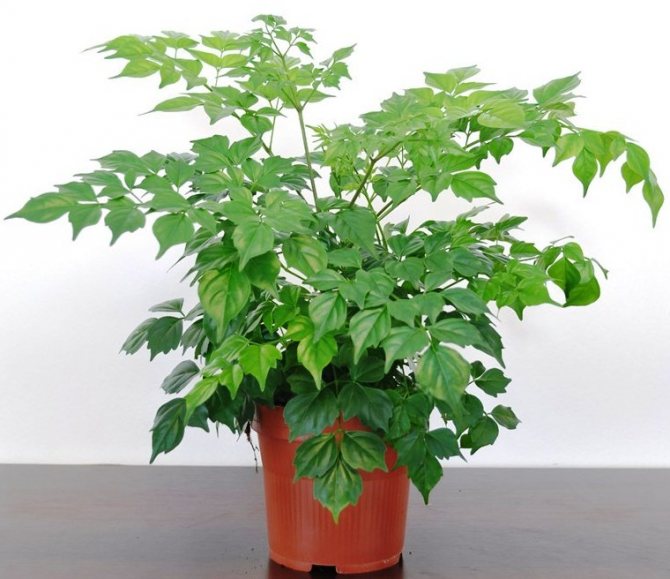

The native land of this extraordinary tree can be considered Southeast China, the island of Taiwan, from where it was brought in in the second half of the eighties of the twentieth century. The radermacher flower has become one of the favorite indoor plants due to its unpretentiousness and ease of growing.
Presumably, due to the extraordinary beauty of the leaves, the radermacher is popularly called the "Emerrald Tree". And other interesting names of this extraordinary branching tree in everyday life can be considered the Serpent Tree, China Doll, indoor ash.
Many species of radermacher, of this small genus, are huge trees reaching thirty meters in height with trunks about one meter in diameter. In uncultivated nature or in greenhouse conditions on a radermacher, large yellow, white or gray-yellow, bell-shaped, cylindrical flowers reaching seven centimeters in diameter bloom unusually beautifully only at night.
From this indescribable charm comes a pleasant smell similar to the smell of carnation flowers.The most interesting thing is that the radermacher can only see its flowering in natural wild conditions, and a houseplant can bloom only after fifteen years of age, and even this is quite rare.
Radermacher in nature is a tall, spreading tree, often with several trunks. Its height reaches 30-40 m. The trunk diameter can be up to 1 m. The houseplant is smaller, it is a lush spreading shrub up to 2 m high. Horizontal ligneous shoots grow along the main vertical trunk. They are covered with a gray-green smooth bark.


On young branches, feathery long leaves grow close to each other. Oval or ovoid leaves are located on the petioles. The length of a whole leaf reaches 20-70 cm, with a width of 15-25 cm. Individual leaves are 2-4 cm long. They have long, pointed ends and smooth or finger-like sides.
A radermaker blooms over the age of 15 years. In summer, single bells appear in the leaf axils or right on the trunk. Sometimes they gather in loose racemose inflorescences. Each bud has a very short peduncle. The length of the flower calyx reaches 7 cm. The color is cream, white or yellow-orange.
After pollination, dry seed pods ripen. They contain small brown seeds with a lionfish.
Care
Priming
The soil for a plant, however, like for any other representative of the flora, should be as saturated with useful substances and airy as possible. Therefore, in the store, pay attention to the primer for decorative flowers (any brand). You can also make the soil for your new pet yourself.: Mix humus, peat, leaf and sod soil in a ratio (1: 1: 2: 1).
Before starting to enthusiastically plant the sprouts of the radermacher in pots, carry out the disinfection procedure.
Pour the mixture into a wide basin, pour boiling water over and let cool, and then stir, put on a baking sheet and bake for half an hour or an hour in the oven at 70-90 degrees.
You can arrange the soil and steaming in a water bath - this option is considered more gentle. Line a colander with a thick cotton cloth, sprinkle dirt in it, and hang it over a saucepan. Warm up for an hour and a half over steam. By the same principle, you can fry the earth in a frying pan with a thick bottom, stew it in foil (sleeve), ignite in the microwave.
Top dressing
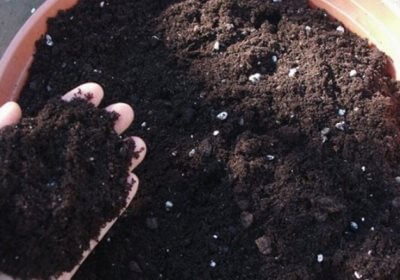

Top dressing is applied every two weeks during the growing season, and after watering, so as not to damage or burn the roots of the plant.
Fertilizers are liquid complexes for decorative leafy flowers with a large amount of nitrogen and phosphorus. There is no need to feed during the rest period.
Radermacher does not tolerate tobacco smoke and, if they do not regularly have smoke breaks nearby, he will shed the leaves in protest and stop growing.
Location and lighting
Radermacher loves sunlight, so give her a spot on the west or east windowsill. On the southern one it is also possible, but it is imperative to hang blackout curtains on the window, otherwise you will not be able to avoid burns. In winter, light should also be in abundance, so attach a special lamp (phytolamp or daylight) on top for additional illumination.
She categorically does not accept drafts, therefore, it cannot be placed near vents, air conditioners and balconies.
The plant pot must be rotated once a week around its axis.so that the radermacher grows evenly and does not lean to the side.
Temperature regime
In spring, summer and autumn, the plant should be warm, with a temperature of at least 20 degrees above zero. In winter, on vacation, a drop of up to +14 degrees is allowed.
Humidity and watering
Radermacher adapts well to dry air, but moderate humidity allows it to maintain its decorative shape at the highest level.Therefore, spray the plant more often, and in the summer give it a warm shower from time to time. In hot weather, place the pot on a tray with damp pebbles or moss.
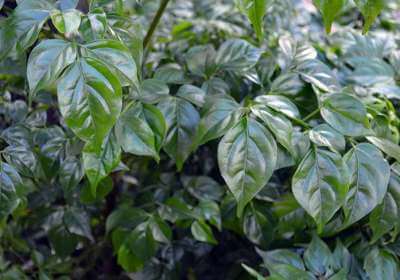

In the summer, the plant should be watered regularly and abundantly, with water at room temperature. As soon as the top layer of soil has dried, you can take the watering can in your hands.
Watering is carried out less often in autumn, even less often in winter., a couple of days after the earth has dried.
Do not take tap water for irrigation. It contains too much bleach and too few minerals.
Well water contains enough salt, but sometimes it is too much for delicate homemade greenery. Liquid from lakes and rivers accumulates dangerous bacteria (including toxic waste) and decay products that only harm. Rainwater is oxygen-rich and neutral, but it also contains chemicals, soot and oils.
Distilled water is considered the safest.because it is free of salt impurities.
Transfer
The best time for a radermacher transplant is spring. Basic transplant rules:
- Young plants are transplanted every year, adults (over 4 years old) - every 2-3 years, as the root system grows.
- The new pot is selected a little wider than the previous one: by 1-2 cm.
- Rotten and damaged roots must be cut off, and the wound is cauterized with a fungicide or sprinkled with crushed charcoal (activated) charcoal.
If the radermaker does not pinch it, it grows quickly and luxuriantly, but not everyone likes it, and it becomes more difficult for the trunk to hold such a dense crown over time. Therefore, regularly remove excess branches from your tree, shorten them, giving the desired shape. The cuttings left in your hands can be successfully used for plant propagation.
How to crop to a radermaker
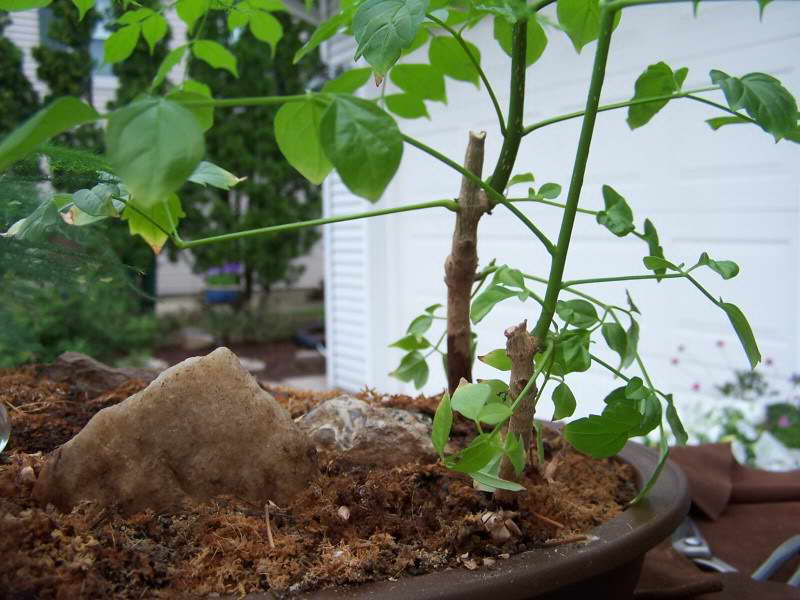

How to crop a photo to a radermaker
Radermacher grows very quickly if not pinched. The plant transfers even a cardinal pruning to a stump, perfectly recovering and driving out young branches. Therefore, feel free to start pruning, giving the tree the desired shape: shorten overly long branches, cut off excess ones.
The cuttings obtained after pruning can be used for propagation by rooting them in water or moist loose soil.
How to make a bonsai from a radermaker
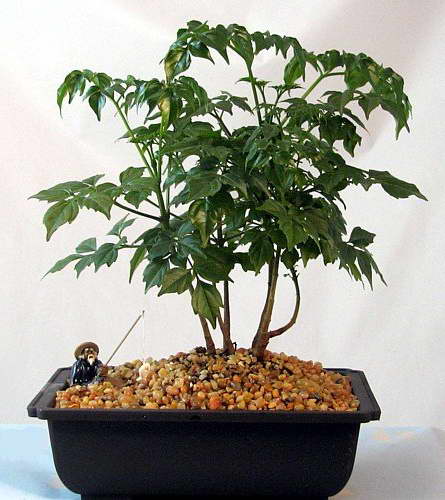

Bonsai from the radermacher photo
You can form a bonsai-style tree by bending the branches with weights or wire until they are lignified. Pruning is best done in early spring or late summer.
Reproduction
Layers
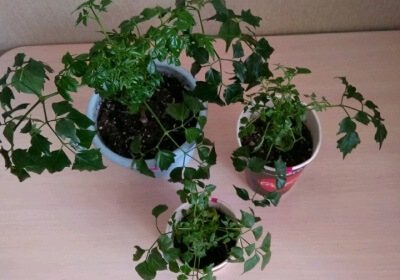

- Cut the stem of the mother plant (length of cut 2-3 cm), cover the cut with moss and a plastic bag. Spray the moss with water from time to time.
- Gradually, roots will grow back at the site of the incision. When they no longer fit in the bag, cut off the shoot and root in the pot.
Cuttings
- Propagation by cuttings is best done in summer. Cut off the top sturdy stems and plant in a mixture of peat and sand. Cover the container with cling film and place in a warm, bright place (the temperature inside should not drop below +24 degrees). Remove the airing film daily, water the soil as it dries.
- Plant rooted cuttings in separate pots.
Seeds
This type of breeding is rarely carried out because before the first seeds appear, you have to wait 14-15 years, and not every seed germinates. The general scheme is simple: the seeds are soaked for 24 hours in a growth stimulator and planted in moist soil. The container is covered with a film or glass and is waiting for germination. It usually happens in two weeks, and already 3 weeks after their appearance, the sprouts can be planted in separate pots.
Pests
Pests can quickly make the plant look inappropriate. The aphids that have settled on the radermacher suck the juice out of it, cause deformation of the stem and yellowing of the foliage.The mealybug leaves behind a fluffy gray bloom, and the spider mite leaves a thin web along the stem and on the back of the leaves.
You can deal with pests in the following ways:
- If adults are visible on the soil or plant, pick them up by hand.
- Wash the radermacher under a warm shower using soap (household or tar).
- Treat the trunk and leaves with the recommended infusion or decoction (based on tobacco, soap, onion husks, turpentine, citrus fruits).
- Use an insecticide (Aktara, Aktellik).
Possible problems
Radermacher is a beautiful flower, and the description of the variety and the care of the plant allow you to get a more complete picture of it. But sometimes you can notice stunted growth, yellowing of the green mass or lethargy. All these are signs of diseases and pests.
You can get rid of insects with the help of insecticides, for example, "Aktara". Green bugs are aphids, and white larvae are mealybugs. All of them are very dangerous for the radermaker.
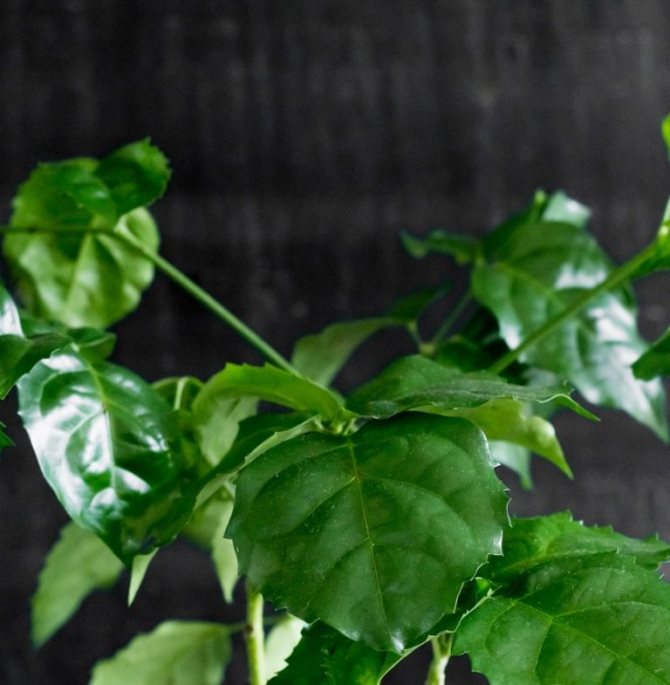

If a cobweb is noticeable upon visual inspection, then this is a sign of a spider mite.
If the leaves begin to dry, then this is a sign of insufficient moisture level. In this case, it is necessary to remove the damaged areas and analyze the conditions of the plant.
If the radermacher does not develop, its leaves fall off - this may be a sign of root rot. It occurs with excessive watering. In this case, the plant must be dug up and the damaged roots removed, and then planted in dry ground.
If the stems are subtly stretching and branching, then this is a sign of insufficient lighting. This is especially pronounced during the rest period. In this case, all unnecessary branches are removed, and the plant itself is rearranged or provided with additional lighting with lamps.
Diseases
- Why do the leaves fall off the plant and the roots begin to rot? You either flooded it with water, or selected the wrong soil. Cut off diseased roots, treat the cut with charcoal and transplant the radermacher into a new soil mixture.
- Do the tips of the leaves, and then the plates themselves, turn yellow? Not enough light! Move the pot to a lighter spot.
- The drooping foliage indicates a lack of moisture, so take a watering can in your hands urgently.
- When the ambient temperature is too high, the shoots of the radermachers begin to stretch out, and the leaves begin to fade. Place the plant closer to the light and ventilate the room often.
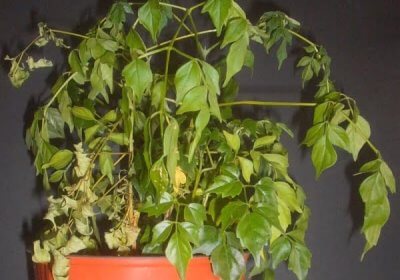

Preventive measures can help you avoid a number of problems and keep your plant safe and sound for longer. Quarantine the new plant, inspect your flowers regularly for insects, trim off yellowed leaves and stems, and follow all care guidelines.
Lighting
Radermacher grows well in a bright place, but does not like direct sunlight. Therefore, if you place it on the southern window, shading is mandatory in the summer.
It must be remembered that the radermacher is a tropical plant that grows under the cover of taller trees.
Lack of lighting in summer is also unacceptable..
When a tree is grown in partial shade or shade, it stretches strongly, its crown thinns, and its trunk becomes thinner.
In summer, the plant needs maximum diffused lighting. In winter, you need to choose the most illuminated place for it. Winter sun rays cannot harm the leaves. Therefore, even when kept on the southern windows in winter, sun protection is not required. The lack of light in winter greatly affects the decorative effect of this species.
Loading ...
Signs and superstitions
According to the teachings of Feng Shui, a radermaker has a positive effect on the mood of the inhabitants of the house, drives away sorrows and dispels boredom. This beautiful lush bush sensitively catches negative "waves" around and attracts them to itself, as well as damage, evil eye, serious diseases, protecting its owners (after which it dies). Radermachera is believed to cleanse spiritual chakras and opens energy channels for communication with a higher power, allows you to forget about minor troubles, to throw strength on what is really important.
It is useful for students to put the plant on their desk, and those in leadership positions - in their offices in prominent places. Having received a gift to the radermaker, you also get a share of happiness.
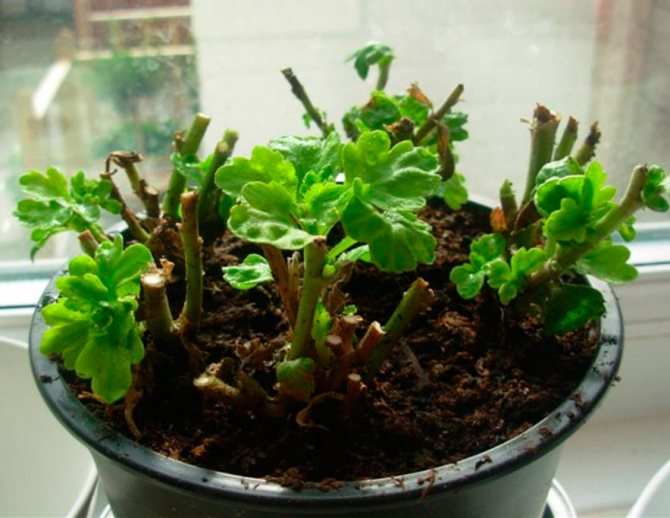

In addition, the plant is able to reconcile even fierce enemies - just buy the coveted pot in the store and hand it to your opponent.
Once upon a time, it was customary to give the sprouts of a radermacher to newlyweds so that they quickly get used to each other and equip their new place of residence.
Photo gallery
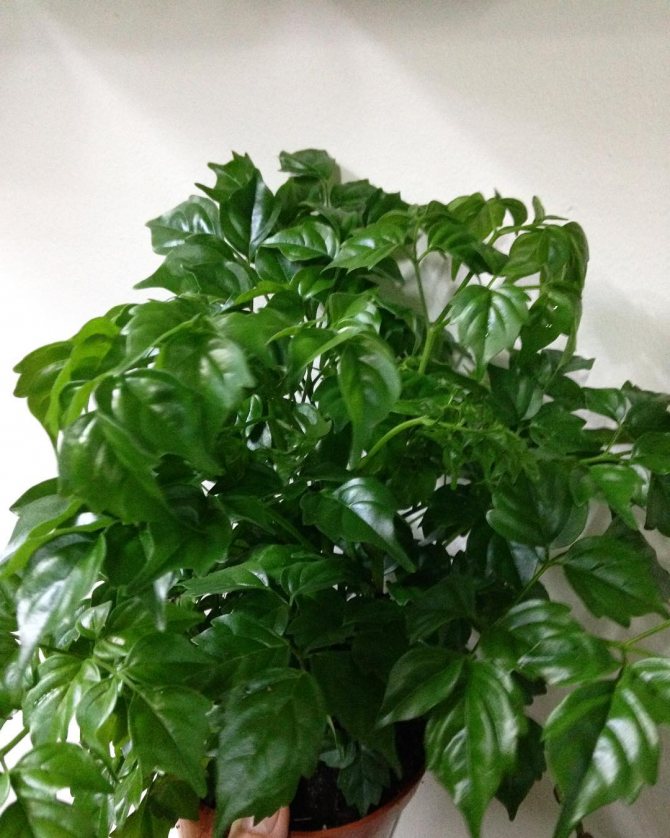

tsvetochnyy_blyuz
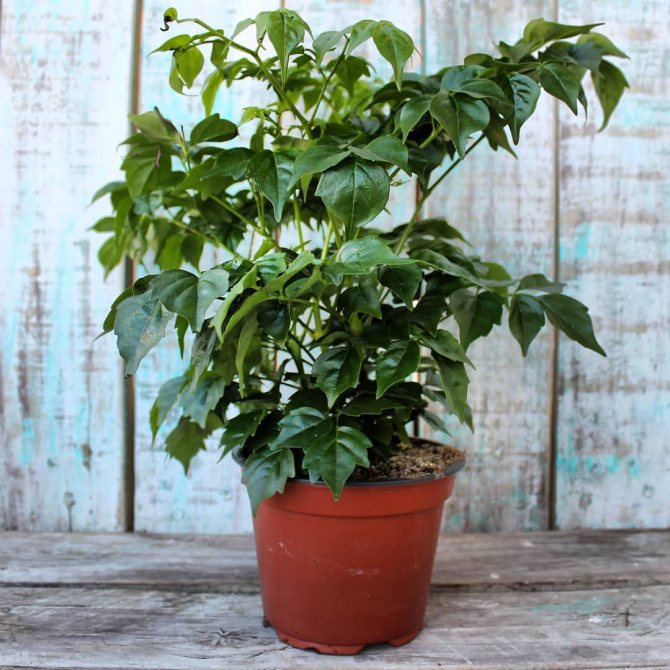

flowerland_aktobe


flowers_ykt_2017


komnatnyetsve
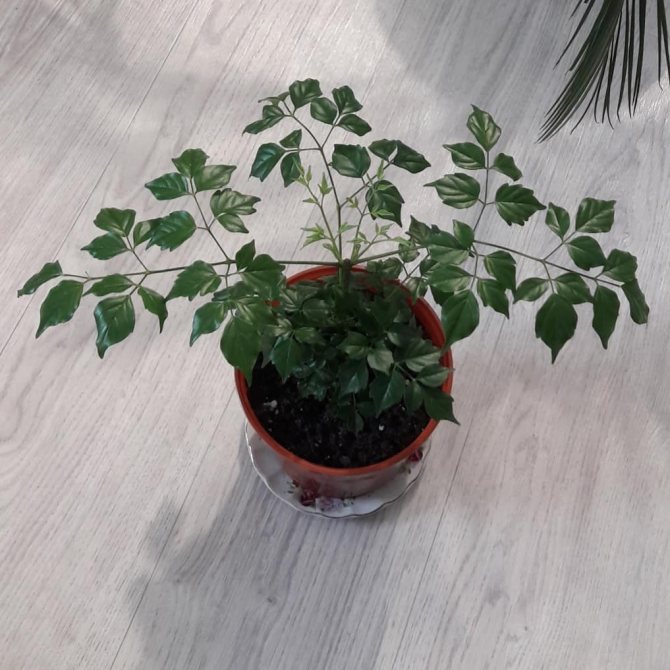

flowers_ykt_2017


tkhitrina




